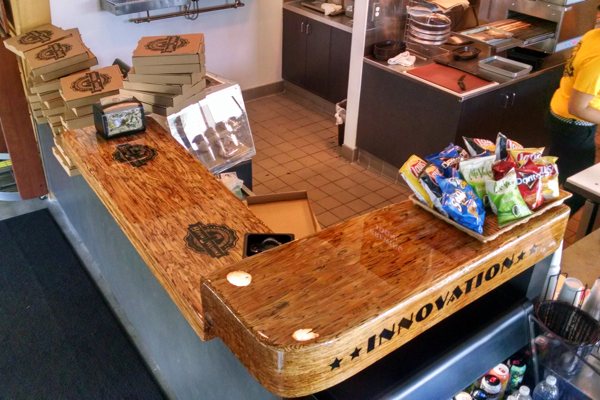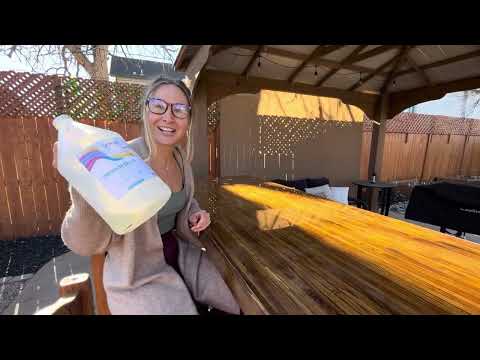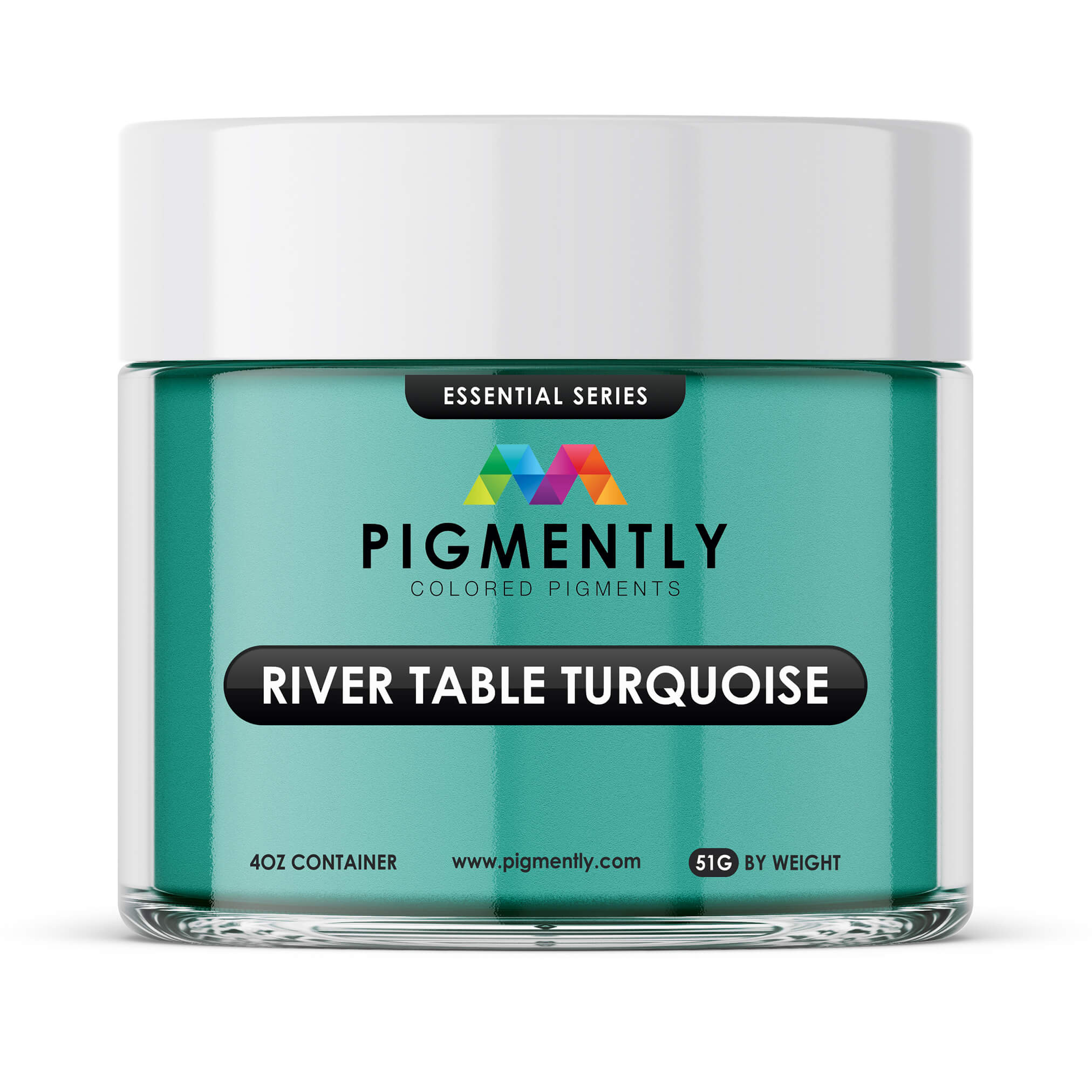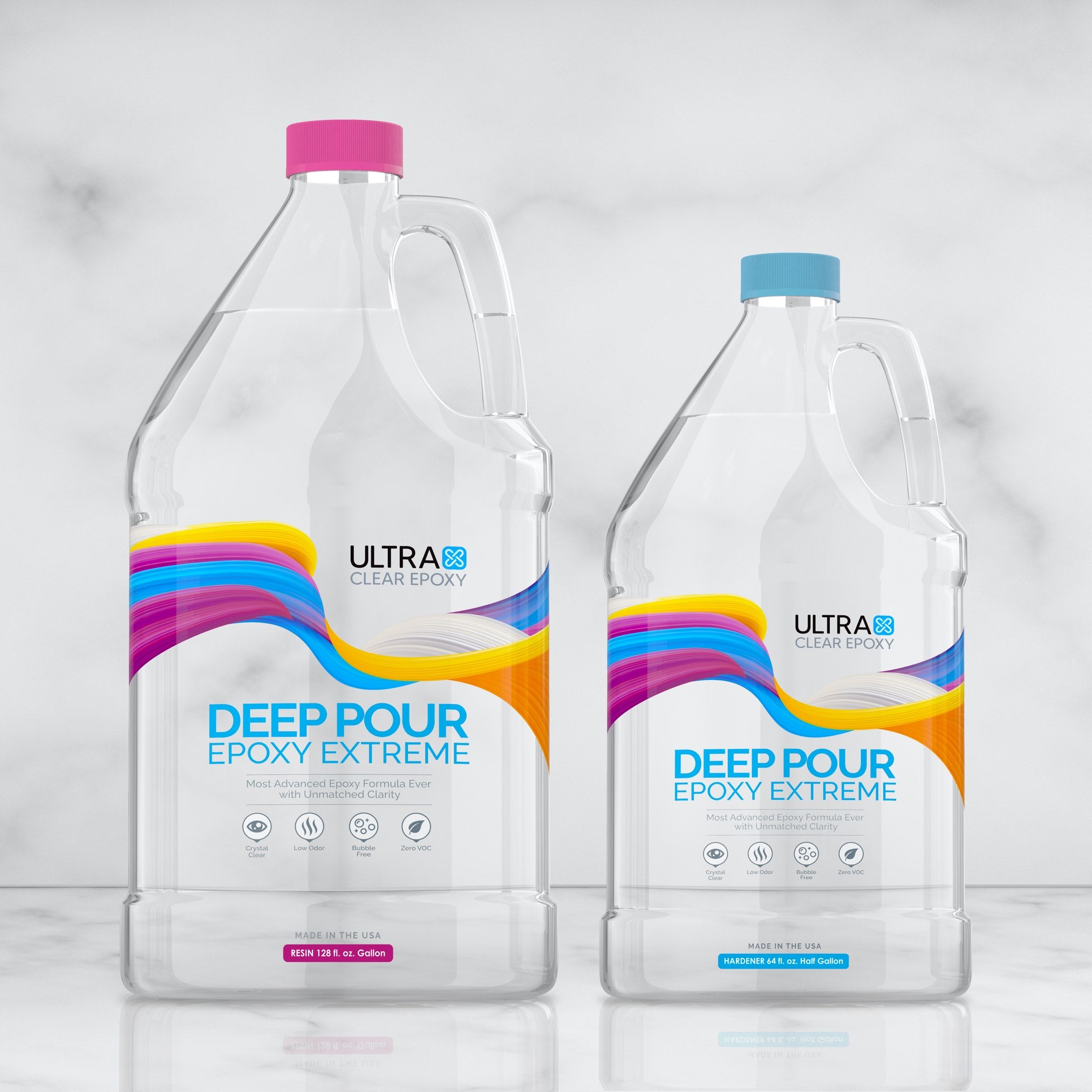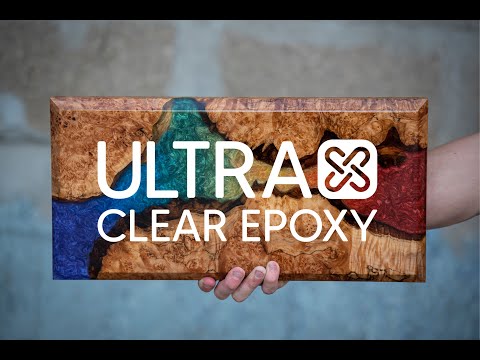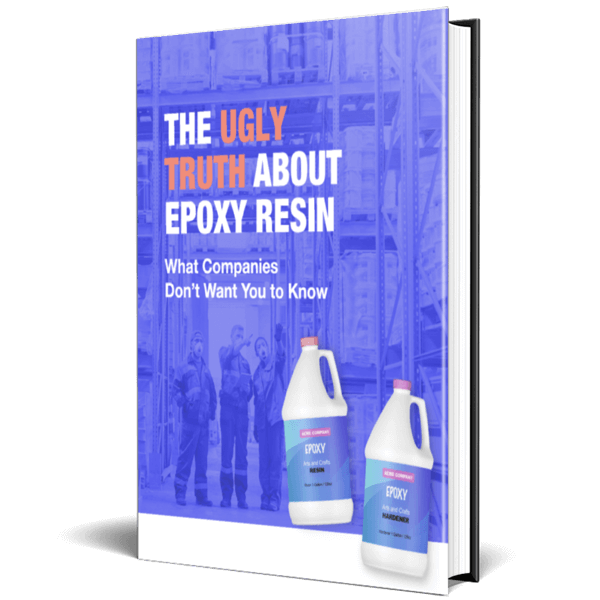An Epoxy Finish: Beauty Built to Last
While epoxy is often chosen for its crystal-clear beauty and glass-like sheen, one of its most impressive qualities is its exceptional resilience. An epoxy finish, when applied correctly, provides a hardened surface that resists the wear and tear that often degrades other finishes. From kitchen bar tops to art projects, epoxy offers a durable protective layer that maintains its appearance through years of regular use.
In this guide, we’ll explore how our UltraClear Epoxy performs against a range of potential threats, including moisture, heat, physical impacts, and chemical exposure. We’ll also cover how to maintain your epoxy finish to keep it clean, smooth, and strong for many years to come. Whether you're sealing a table top or crafting durable decor, knowing how epoxy stands up to damage will help you make the most of your DIY projects.
Epoxy vs. Other Common Sealants
Before diving into specific types of damage epoxy can resist, it's helpful to understand how it stacks up against other popular sealant options. Here’s a breakdown comparing epoxy to four commonly used surface sealants.
Common Sealant Types Compared
| Feature | Polyurethane | Varnish | Shellac | Lacquer | Epoxy |
|---|---|---|---|---|---|
| Durability | Moderate | Moderate | Low | Moderate | High |
| Water Resistance | Moderate | Moderate | Low | Low | Excellent |
| Heat Resistance | Good | Moderate | Low | Moderate | Good |
| Chemical Resistance | Fair | Poor | Poor | Fair | Excellent |
| Scratch Resistance | Fair | Poor | Poor | Fair | High |
| Ease of Application | Moderate | Moderate | Easy | Easy | Moderate |
| Clarity and Gloss | Moderate | Moderate | Amber Tint | High Gloss | Crystal Clear |
| Maintenance Requirements | Regular | Regular | Frequent | Frequent | Low |
Epoxy stands out for its strength, clarity, and low maintenance. While it can require more care during application, the result is a long-lasting, high-performance surface ideal for both decorative and functional use.
Types of Damage UltraClear Epoxy Can Withstand
Surfaces in our homes and workspaces face a variety of hazards on a daily basis. Fortunately, epoxy excels at resisting many of the most common forms of damage, making it one of the most reliable protective coatings available.
Below are the key types of damage that surfaces typically encounter:
-
Moisture Damage
-
Sunlight/UV Exposure
-
Physical Impact
-
Scratching and Abrasion
-
Chemical Spills
-
Heat Exposure
Moisture Damage: Prevented by a Waterproof Seal
Once cured, epoxy forms a non-porous, waterproof barrier that prevents moisture from penetrating the surface below. This makes it especially valuable for table tops, countertops, and art projects that may be exposed to spills, humidity, or cleaning liquids.
Furthermore, this also makes it a good choice for an outdoor project, as the waterproof seal can prevent rain and similar inclement weather from causing any damage.
Ideal for Surfaces with Frequent Liquid Contact
UltraClear Bar & Table Top Epoxy offers excellent moisture resistance, making it ideal for indoor applications where water contact is common, such as with kitchen countertops and dining tables.
Stains and Spills Are No Longer a Problem
Epoxy’s non-porous surface also doesn’t absorb liquids, which means it resists staining from food, drinks, oils, and dyes. This property makes it well-suited for dining surfaces, coffee tables, or craft stations where messes are more likely. Spills can be wiped up with ease, reducing the risk of discoloration or odor retention.
Sun/UV Exposure: Proper Resistance—with Ways to Further Mitigate
Although epoxy itself can be affected by prolonged exposure to UV rays, using high-quality products like UltraClear Epoxy with UV inhibitors can minimize yellowing and degradation over time.
It’s perfect for decorative items and furniture placed in bright rooms, though outdoor use should still involve protective coverings to minimize long-term light exposure. Additionally, for pieces that will be near windows or exposed to indirect sunlight, it’s a good idea to choose an epoxy designed with resistance to UV light.
Maximize Outdoor Endurance with a Protective Topcoat
To further enhance epoxy's resistance to UV light, you can apply a UV-resistant topcoat to the cured epoxy surface. This will filter out the UV lighting and prevent it from affecting the epoxy surface, preserving its clarity.
Physical Impact: A Rock-Solid Formula to Withstand It All
Epoxy creates a solid, durable shell that resists dents, chips, and other physical damage. It offers far better protection than varnishes or polyurethane finishes, which for so long were the go-to sealant choice.
This high level of resilience makes it ideal for bar tops, table tops, and furniture pieces that see daily use, especially where frequent rough treatment is a concern.
Scratches & Abrasions: Not a Problem with UltraClear
While no finish is completely scratch-proof, a cured epoxy surface is tough and resists light abrasions well. This is especially true for UltraClear Bar & Table Top Epoxy, which cures to a high-gloss, glass-like finish that can be polished or refinished if necessary. Avoid dragging sharp or rough objects across the surface to minimize wear.
While it’s not entirely scratch-proof, its unparalleled durability makes it suitable for commercial and residential environments alike. Occasional refinishing or a topcoat can restore any wear that may occur over time.
Chemical Spills: Easier to Deal with for Epoxy Surfaces
Epoxy resists many household chemicals, such as alcohol, mild acids, and cleaning products, including those from food and drinks. This makes it an excellent choice for kitchens, garages, and workshops where accidental spills are common.
Wipe up chemical spills quickly to maintain clarity and avoid dulling the surface.
Heat Exposure: A Common Concern That's Simple to Address
Epoxy can handle moderate heat, but it does have its limits. UltraClear Bar & Table Top Epoxy withstands temperatures up to 135°F. This is more than sufficient for most household scenarios, but hot pots or pans should always be placed on trivets. Prolonged heat above this threshold can lead to softening or marking of the surface.
Maintenance Tips for a Long-Lasting Epoxy Finish
Maintaining your epoxy finish doesn’t require much effort, but a little care goes a long way in preserving its clarity and durability.
-
Clean with gentle soap and water. Avoid harsh chemicals and abrasive scrubbing pads. A soft cloth and mild detergent are usually all you need for daily cleaning.
Learn more about cleaning epoxy surfaces here. -
Use trivets and coasters. This protects your surface from excessive heat and reduces the chance of scratches from heavy or sharp objects.
-
Avoid prolonged direct sunlight. If your surface is near a window, consider using blinds or translucent curtains to filter UV light during peak daylight hours.
-
Reapply a clear coat if needed. Over time, if your surface becomes dull or scratched, a fresh coat of UltraClear Bar & Table Top Epoxy—or our Art & Craft Epoxy for small projects—can restore its high-gloss appearance.
-
Fix minor scratches with polishing kits. Light abrasions can often be buffed out using a polishing compound and a soft cloth.

Why Budget-Brand Epoxies Fall Short
Among the many epoxy offerings these days are numerous "budget-brand" epoxies that have little history and a surprisingly low price. While these epoxy products might seem like a great way to save money, they often come with significant trade-offs.
Most inexpensive epoxy resins are produced overseas, then imported to the U.S. They typically lack the rigorous quality control found in U.S.-made brands and aren't subject to the same level of scrutiny that ensures the quality and safety of the product is up to par. These inconsistent formulations can lead to unpredictable curing times, poor bonding, or yellowing soon after application.
Many budget epoxy resins are prone to forming bubbles during mixing and pouring due to inferior blending and lower-quality ingredients. These bubbles often remain trapped in the cured resin, creating a cloudy or pitted appearance that ruins the clarity and gloss of the finish. Worse still, cheaper epoxies often lack critical additives like UV stabilizers and defoamers, resulting in compromised durability.
There's also a health and safety component to consider. Imported epoxies may not adhere to the same safety standards as U.S.-manufactured brands. This can lead to exposure to harmful fumes or underperforming mixes that fail to cure properly, leaving tacky, unusable results. For projects where quality, safety, and durability matter, cutting corners can cost more in the long run.
Learn more about the importance of your epoxy choice here.
Choose UltraClear for Unmatched Performance
UltraClear Epoxy is designed for consistent results, crystal-clear clarity, and maximum durability. Each of our formulas is made in the U.S.A. under strict quality standards:
-
UltraClear Bar & Table Top Epoxy—Best for conventional bar tops, table tops, and other surfaces requiring a smooth, strong, glass-like finish.
-
UltraClear Deep Pour Epoxy—Ideal for river tables, deep casting, and layered projects with thick pours.
-
UltraClear Art & Craft Epoxy—Perfect for smaller projects like coasters, trays, and decor with intricate color and design.
With UltraClear, you're not only getting a premium epoxy—you're getting peace of mind, superior aesthetics, and a finish that lasts.
FAQs: Protecting and Preserving Epoxy Finishes
How do I prevent scratches on my epoxy surface?
Epoxy is highly resistant to scratching, but that doesn't make it impervious.
To prevent scratches from occurring, we recommend that you use coasters, placemats, or felt pads under objects that could cause scratches. Avoid dragging items across the surface and regularly clean to remove grit that could cause abrasion.
Never use epoxy as a food prep surface. UltraClear Epoxy surfaces are food safe, but you should still use proper tools, such as a cutting board, to prepare your food.
Is epoxy waterproof?
Yes. Once cured, epoxy is fully waterproof and creates a sealed surface that resists moisture intrusion. It is ideal for kitchens, bathrooms, and bar tops.
This applies to all of our UltraClear Epoxy products.
Can I put hot pans or mugs on epoxy?
UltraClear Bar & Table Top Epoxy resists heat up to 135°F. Use trivets or coasters for hot items to prevent heat marks or soft spots from forming.
Will epoxy yellow over time?
Lower-quality epoxy is more likely to yellow. UltraClear Epoxy is designed to resist yellowing and maintain clarity with proper care in an indoor setting.
In an outdoor setting, you can bolster this resistance with a UV-resistant urethane topcoat once the epoxy has fully cured.
How long does epoxy last?
With proper maintenance, an epoxy finish can last many years without losing clarity or durability. Occasional re-coating or polishing may be needed after extended use.
Can I fix surface damage without redoing the whole project?
Yes. Light scratches or dull spots can be polished out. For more serious surface damage, sanding followed by a fresh flood coat can restore the original look.
Have Questions? Want Advice? We're Here to Help!
If you have any questions about the resilience of epoxy resin, or if you'd like assistance in planning an epoxy project, please reach out to us at UltraClear Epoxy—our epoxy experts are ready to assist!
You can contact us via phone or email here. During business hours, you can also text chat online with one of our resin specialists by clicking the Help button at the bottom of your screen.
In our online store, you'll find a variety of useful tools and supplies, ideal for resin projects, plus our award-winning UltraClear Bar & Table Top Epoxy and our UltraClear Deep Pour Epoxy.
UltraClear Epoxy—Trusted by over 1 Million+ Happy Customers

